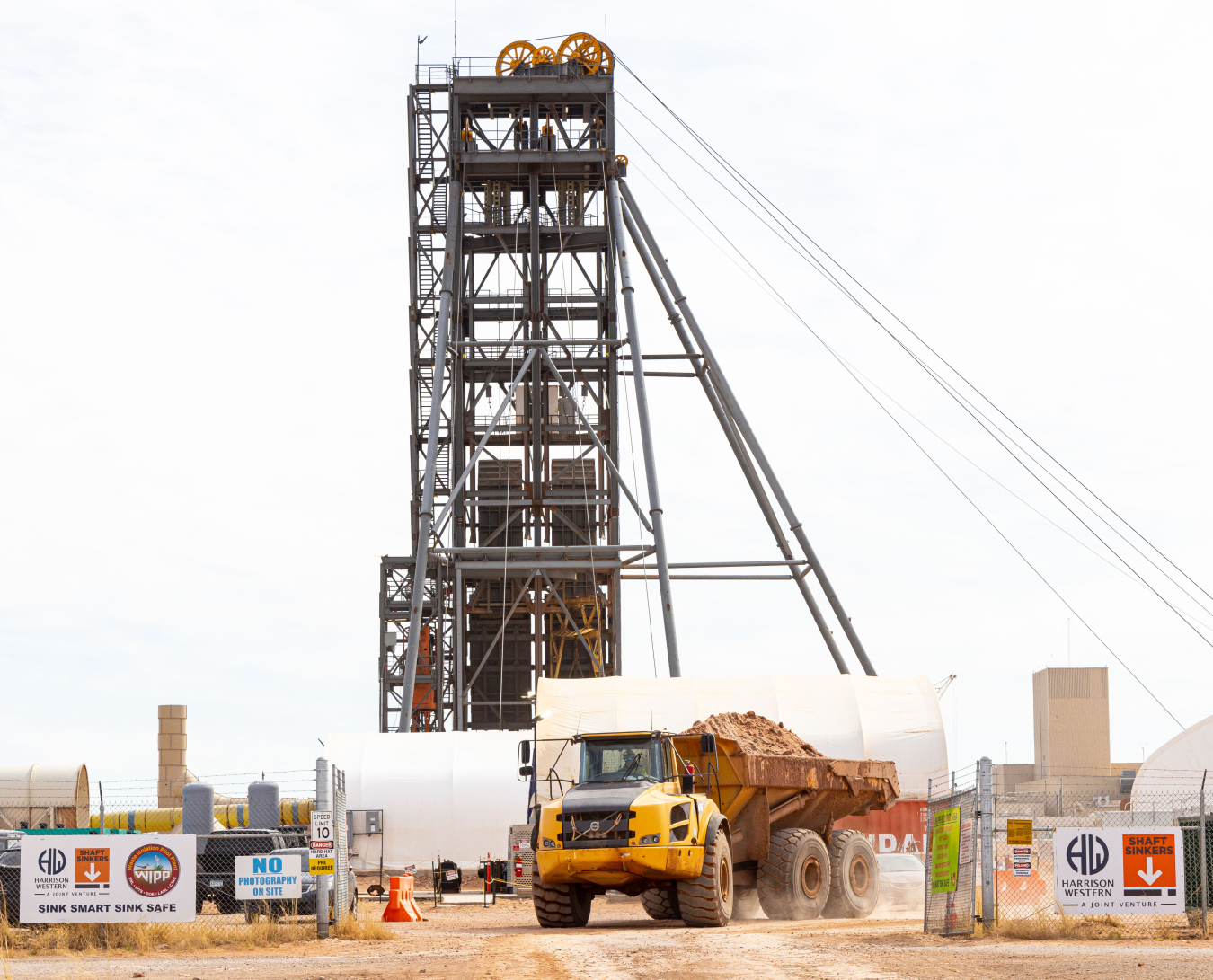 The US Department of Energy (DOE) Waste Isolation Pilot Plant (WIPP) in New Mexico recently achieved a milestone as its largest safety-related ventilation system reached its final depth of 2,275 feet. The new air intake shaft, 26 feet in diameter, supports the Safety Significant Confinement Ventilation System (SSCVS), which will increase underground airflow from 170,000 cubic feet per minute (cfm) to 540,000 cfm.
The US Department of Energy (DOE) Waste Isolation Pilot Plant (WIPP) in New Mexico recently achieved a milestone as its largest safety-related ventilation system reached its final depth of 2,275 feet. The new air intake shaft, 26 feet in diameter, supports the Safety Significant Confinement Ventilation System (SSCVS), which will increase underground airflow from 170,000 cubic feet per minute (cfm) to 540,000 cfm.
WIPP, located some 26 miles east of Carlsbad, was constructed in the 1980s for disposal of defence-generated transuranic (TRU) waste. The repository is carved out of a 2,000-foot-thick salt bed. TRU waste is disposed of 2,150 feet underground in rooms mined from the salt bed.
Increased airflow will allow for simultaneous waste emplacement, mining and bolting to take place underground at WIPP, the only US repository for defence-related TRU waste. DOE’s Office of Environmental Management (EM) said bolting controls the movement of salt rock, known as salt creep. “Reaching this milestone is a real tribute to the crews who worked safely and compliantly around the clock,” said Mark Bollinger, EM Carlsbad Field Office manager.
Above the utility shaft’s final depth of 2,275 feet, crews are already cutting horizontally into the salt to create connecting passageways, or drifts, to the WIPP mine. Salado Isolation Mining Contractors (SIMCO), WIPP’s management and operations contractor, is overseeing the SSCVS and utility shaft projects. Crews from SIMCO’s subcontractor, the joint partnership of Harrison Western and Shaft Sinkers, reached the shaft bottom by working a 24/7 schedule to support the project, EM said.
“Completion to depth is a great achievement,” said Ken Harrawood, SIMCO president and programme manager. “This milestone sets the stage for all of our future progress to the west, including Panel 11.”
The drilling crews reached the depth of the WIPP waste disposal rooms in early July, ahead of schedule. Horizontal passageways were created on either side of the shaft. These will be further mined to connect to the existing WIPP underground and provide access drifts, or connecting passageways, for new waste disposal panels that have been authorised at WIPP, EM noted. The final depth of the air intake shaft, at 2,275 feet, provides space below the repository level for work areas and infrastructure, such as communications and electricity, that will support mining activities.
The $100m air intake shaft is part of an almost $500m rebuild of the plant’s ventilation system and will also provide access to the west end of the mine where nuclear waste is disposed of via burial, according to the Carlsbad Current-Argus. The entire project is scheduled to be complete by 2026. Two new panels are being built at the west end to hold nuclear waste. These are needed to replace space lost after a 2014 incident contaminated parts of the underground.
The incident occurred when an incorrectly-packaged drum of waste shipped from Los Alamos National Laboratory in northern New Mexico ruptured due to a chemical reaction. The resulting radiation release contaminated parts of the WIPP underground and led to a three-year shutdown of the facility’s primary operations. The site reopened and began accepting waste again in 2017, with some areas of the underground remaining restricted and requiring workers to wear breathing apparatuses when entering. Following the incident, WIPP’s airflow was restricted to about 170,000 cfm.
Another incident occurred in 2022, Carlsbad Current-Argus reported. Following an investigation, officials said there was no risk of a radiological release. As a drum of waste was being processed, liquid was found at the bottom of the container which tested positive for radioactive contamination, according to a WIPP news release. All personnel in the area were evacuated and tested for contamination, and operations were temporarily suspended. No radiation was released from the site, and there was no risk to the public.
Two more recent incidents were cited in the latest monthly report from the federal Defense Nuclear Facilities Safety Board. In August a forklift driver collided with a drum containing nuclear waste, puncturing the container, the report said. This led to a cease of waste handling operations while the area was tested for contamination. The driver, who hit an area of “soft ground,” altering his approach of the drum, tested positive for a controlled substance, according to the report.
In September, continuous air monitors (CAMS) in the underground began sounding, indicating possible airborne contamination. All underground activities were suspended, and all workers on the surface were told to stay inside while the underground was evacuated. No contamination was found and the alerts were reportedly caused by electrical issues.
Image: The utility shaft has reached the depth necessary to allow horizontal tunnelling work to begin, which will connect the shaft to the WIPP underground repository complex (courtesy of DOE)



